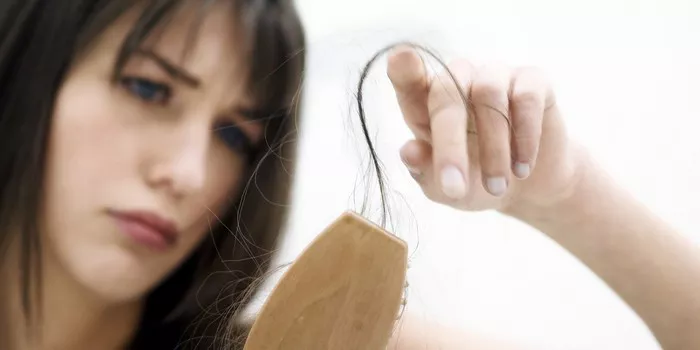The journey of motherhood is a transformative experience, marked by numerous physical and emotional changes. Among the common postpartum challenges that new mothers face, hair loss often emerges as a topic of concern. How long does postpartum hair loss last? In this in-depth exploration, we unravel the intricacies of postpartum hair loss, understanding its causes, and duration, and providing valuable insights for new mothers navigating this phase.
1. The Postpartum Period: A Time of Fluctuations
Understanding Hormonal Shifts
Postpartum hair loss, also known as telogen effluvium, is a phenomenon linked to hormonal fluctuations during pregnancy and the subsequent postpartum period. During pregnancy, elevated hormone levels prolong the growth phase of hair, resulting in thicker and more voluminous locks. However, after childbirth, hormones return to pre-pregnancy levels, causing a shift in the hair growth cycle.
2. When Does Postpartum Hair Loss Begin?
The Onset of Shedding
Postpartum hair loss typically begins around three to six months after giving birth. This delay is attributed to the fact that the hormonal changes causing hair loss occur during pregnancy but become noticeable only after the postpartum hormone normalization. The shedding can be gradual or sudden, and its intensity varies among individuals.
3. Temporary Nature: A Reassuring Outlook
Embracing the Transient Phase
The good news for new mothers facing postpartum hair loss is its temporary nature. In most cases, this shedding is a transient phase that resolves on its own. Understanding that it is a natural part of the postpartum experience can alleviate concerns, fostering a sense of reassurance during this period of adjustment.
4. Causes of Postpartum Hair Loss: Hormones and Beyond
Unpacking the Triggers
The primary cause of postpartum hair loss lies in hormonal changes, specifically the drop in estrogen levels after childbirth. Estrogen, known for promoting hair growth during pregnancy, can lead to an extended growth phase. However, when estrogen levels decrease postpartum, a larger portion of hair enters the resting (telogen) phase, resulting in increased shedding.
5. Breastfeeding and Hair Loss: Debunking Myths
Navigating the Breastfeeding Connection
Contrary to common myths, breastfeeding itself is not a direct cause of postpartum hair loss. While breastfeeding can influence hormone levels, the act of breastfeeding alone is not the primary trigger for hair shedding. Mothers can breastfeed without exacerbating postpartum hair loss, emphasizing the importance of dispelling misconceptions surrounding this topic.
6. Managing Postpartum Hair Loss: Practical Tips
Self-Care Strategies
While postpartum hair loss is a natural and temporary phase, certain strategies can help manage its impact:
Nutrition: Ensure a balanced diet rich in vitamins and minerals essential for hair health.
Gentle Hair Care: Use mild shampoos and avoid excessive heat styling or tight hairstyles.
Stress Management: Practice stress-reducing activities to minimize the impact of stress on hair health.
Supplements: Consult with healthcare professionals about supplements that may support hair health.
7. Seeking Professional Guidance: When to Consult a Doctor
Recognizing Red Flags
While postpartum hair loss is generally a self-resolving condition, certain signs may warrant medical attention. If hair loss persists significantly beyond the postpartum period, is accompanied by other symptoms, or causes distress, consulting a healthcare professional or dermatologist is advisable to rule out underlying issues.
8. Embracing Change: Redefining Beauty Standards
A Shift in Perspective
Postpartum hair loss is a shared experience among many new mothers, underscoring the importance of embracing change and redefining beauty standards. Cultural narratives surrounding postpartum bodies are evolving, emphasizing self-acceptance and celebrating the diverse experiences that come with motherhood.
9. The Role of Genetics: Individual Variations in Hair Loss
Understanding Genetic Predispositions
Genetics can play a role in determining the extent and duration of postpartum hair loss. If a woman has a family history of hair thinning or conditions like androgenetic alopecia, she may be predisposed to experience more pronounced shedding. Recognizing these genetic factors can provide context to individual variations in postpartum hair loss experiences.
Conclusion: Navigating the Seasons of Change
In conclusion, the question of how long postpartum hair loss lasts is met with the understanding that it is a transient phase, typically resolving within a few months. This shedding, while influenced by hormonal shifts, is a natural part of the postpartum journey. New mothers can navigate this season of change with confidence, armed with knowledge, self-care strategies, and the assurance that the beauty of motherhood transcends the temporary shifts in hair density.
As mothers embrace the transformative journey of bringing new life into the world, postpartum hair loss becomes a chapter in a larger narrative of growth, resilience, and the enduring beauty that arises from the profound experience of motherhood. It is a journey marked not only by physical changes but also by the strength and adaptability that define the essence of motherhood itself.

